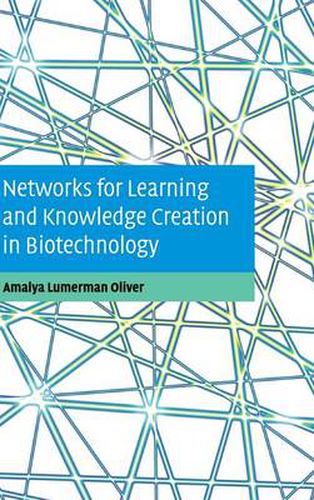Readings Newsletter
Become a Readings Member to make your shopping experience even easier.
Sign in or sign up for free!
You’re not far away from qualifying for FREE standard shipping within Australia
You’ve qualified for FREE standard shipping within Australia
The cart is loading…






Scientists in the biotechnology sector have developed a vast array of products and procedures, including drugs, diagnostics, agricultural products and veterinary procedures. This is made possible through various intra- and inter-organizational collaborations between the academic and private sectors, and through the establishment of networks for learning. In Networks for Learning and Knowledge Creation in Biotechnology, Amalya Lumerman Oliver shows how, in many respects, the organizational structure of the industry parallels one of its most important innovations - recombinant DNA (rDNA). She shows how the concept of recombination can be used to explain a number of organizational elements, including biotechnology firms, the form of university-based spin-offs, scientific entrepreneurship, and trust and contracts in learning collaborations and networks. The result is a stimulating account of how multiple theoretical perspectives can be used to understand the structure of the biotechnology industry.
$9.00 standard shipping within Australia
FREE standard shipping within Australia for orders over $100.00
Express & International shipping calculated at checkout
Scientists in the biotechnology sector have developed a vast array of products and procedures, including drugs, diagnostics, agricultural products and veterinary procedures. This is made possible through various intra- and inter-organizational collaborations between the academic and private sectors, and through the establishment of networks for learning. In Networks for Learning and Knowledge Creation in Biotechnology, Amalya Lumerman Oliver shows how, in many respects, the organizational structure of the industry parallels one of its most important innovations - recombinant DNA (rDNA). She shows how the concept of recombination can be used to explain a number of organizational elements, including biotechnology firms, the form of university-based spin-offs, scientific entrepreneurship, and trust and contracts in learning collaborations and networks. The result is a stimulating account of how multiple theoretical perspectives can be used to understand the structure of the biotechnology industry.